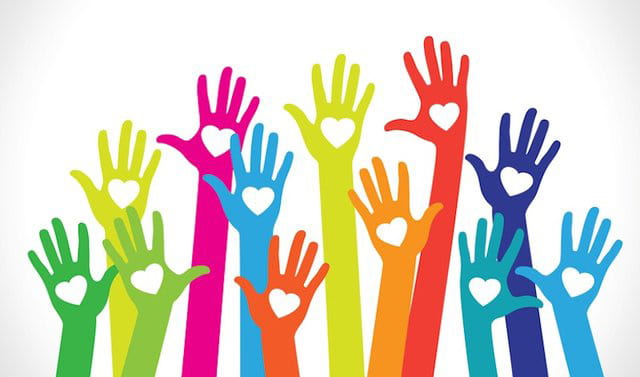
What are the main forms of autism and how to recognize them?
Difficulties in social relationships, ineffective verbal or non-verbal communication and behavioural problems are the main things we think of when we hear the word autism. And as social beings this is perfectly normal. But parents of children with autism spectrum disorder might say that the non-social characteristics of autism are no less important and visible, such as atypical responses to sensory stimuli or a remarkable ability to focus on small details. Many attempts have been made to explain all of the symptoms of autism, but no single theory has yet explained all of its diverse manifestations and characteristics.
1.Yet here are the most common symptoms
Just as autistic disorders range across a spectrum, the same can be said for symptoms. However, there are a few basic ones by which you can tell if it's time to see a specialist. Here are the early signs to look out for as parents:
-
Communication difficulties
One of the most common symptoms in children with autism is difficulty communicating and interacting with others. There is a lack of eye contact, facial expressions, lack of response when saying the name. Problems with social skills prevent them from initiating and maintaining conversations, understanding nonverbal cues, and developing relationships.
-
Slow speech and body language
Children with autism may exhibit symptoms such as speech delay, lack of language skills or may not speak at all. Modulating tone of voice effectively can be a challenge for some. They sometimes have coordination problems or exhibit odd movement patterns, such as clumsiness or tiptoeing, as well as inexpressive body language.
-
Repetitive behaviour
Children with autism spectrum disorder often exhibit repetitive behaviors such as rocking, hand clapping, or spinning, as well as narrowly focused interests. In addition, they easily become anxious when there is a change in routine or their environment. Some have specific food preferences, such as eating only certain foods or refusing foods with a certain texture.
-
Sensory problems
Children diagnosed with an autism spectrum disorder may be overly sensitive or undersensitive to certain stimuli such as sounds or lights. Sometimes they do not respond to touch but may be indifferent to pain. In some cases have co-occurring disorders such as attention-deficit/hyperactivity disorder, obsessive-compulsive disorder, anxiety or depression, or conduct disorder.
2.What are the main forms of autism?
Although the general name "autism spectrum disorder" is now used, there have been several major forms in the past that have combined different manifestations of autism symptoms. Some of these we continue to see today as designations, so it is worth mentioning them.
-
Asperger syndrome
When we hear of autism spectrum disorder, we most often think of Asperger's syndrome, although in the beginning it was distinguished from autism, perhaps because of the milder form some of the symptoms manifested. This is because Asperger's syndrome does not necessarily manifest at a young age, nor is there a developmental delay or speech delay. It has very high intelligence and strong memory, yet social skills are lacking and there is an inability to maintain contact with peers.
-
Caner syndrome
It is named after Dr. Leo Kaner, who is credited with the first reports of autism in 1943. It is therefore accepted as an outdated term for what we now call autism. It identifies what is called "infantile autism," or a disorder seen in infants and children that includes socialization disorders and repetitive behaviors, among other symptoms.
-
Rett syndrome
It is in turn named after Dr. Andreas Rett, who described a neurodevelopmental disorder that primarily affects girls. Children with Rett syndrome often show similar symptoms to autism at a young age, such as loss of communication and social skills. However, it has many physical symptoms not found in autism spectrum disorders. He has muscle weakness, atypical breathing patterns, cognitive impairment, growth retardation, inability to speak, and even seizures.
-
Childhood disintegrative disorder
Before its reclassification as an autism spectrum disorder, it was considered a rare and more severe form of autism. Its symptoms are the same as those of autism, except that they manifest later and can worsen suddenly. Signs of a disintegrative disorder include loss of motor skills, lack of bladder or bowel control, inability to self-care, lack of social skills and lack of expressive language skills. Rates of epilepsy are higher in children with this disorder than in children with autism.
In recent years, however, there has been more talk about levels relative to the manifestation of symptoms and the care that is needed for children with autism. For example, level 1 is considered the mildest form of autism spectrum disorder. It has difficulty with social interactions, expressing oneself and holding a conversation, as well as problems with moving from one activity to another or trying new things. Children with autism level 2 require more support and treatment because they have more significant communication problems, greater difficulty changing focus or moving from one activity to another, and obvious problems with verbal and nonverbal skills. The most severe form of autism is level 3, and children in this category have the greatest social and communication challenges, very rarely or never initiate social contact, have limited language skills or no speech at all, and exhibit limited or repetitive behaviors that significantly interfere with normal functioning.
The three levels are valuable because they help determine the level of support a child needs. But they cannot provide a complete picture of strengths and limitations because some children with autism level 1 may need more support at school but less support in their own home, while others may be fine at school but need support in social situations. For this reason, many mental health professionals do not find these levels helpful and prefer to provide a more general diagnosis of ASD. So you can see how divergent the categorisations can be in terms of the forms and manifestations of autism and how wide the spectrum really is.You can also read more useful autism related articles on our blog:
3.Why you shouldn't worry about asking for help
As they get older, some children with autism spectrum disorder become more communicative with others, show fewer behavioral disturbances, and those with the mildest symptoms can lead normal or near-normal lives. With early and timely treatment, people with mild to moderate symptoms can complete higher education. People with below-average abilities can also do specialized work and live completely independently. Others, however, continue to have difficulty with language or social skills, and the teen years can bring even greater behavioral and emotional problems. Abilities and needs vary and can develop over time. People with autism often have comorbid conditions including epilepsy, depression, anxiety and attention deficit hyperactivity disorder, as well as challenging behaviours such as difficulty falling asleep and self-harm. The level of intellectual functioning also varies widely and can sometimes be associated with profound impairment.
While some people with autism can live independently, others have severe disabilities and need lifelong care and support. Not surprisingly, the World Health Organization stresses that it is very important that, once autism is diagnosed, children, adolescents and adults with autism and their caregivers are offered appropriate information, services, referrals and support based on their individual needs and preferences. This is because those with autism are complex and require a range of integrated services that include specific care and rehabilitation to enable them to have a good quality of life.
Ask for help and start your campaign now or lend a hand and support some in need.
So you shouldn't be embarrassed to ask for help if you can't cope on your own - mentally, physically or financially. Asking for help doesn't make anyone weak. Rather, it shows courage and strength to overcome a problem. It shows that you can ask for help when you are in difficulty and know how and where to do it.
One of the benefits of the online environment and new technology is the ease of reaching out to others. Social networking undoubtedly provides many opportunities, but at the same time, posts can easily get buried among millions of others. Very often one post is not enough, and a bigger campaign is needed, especially if you need more funds. This is exactly why you should rather try to create your own fundraising campaign. The PavelAndreev.BG donation platform will help you reach many more people. Tell your story, show what you are going through, share photos, videos (you can add more information and photos later) and be sincere in your wishes. People always recognize sincerity. If you don't know where to start, if you have technical difficulties or if you need guidance on the exact steps to create your personal campaign, the PavelAndreev.BG team will be there to help. Because in a world where people want to solve their problems quickly, surrounding ourselves with people who can help us in different situations is quite useful.

What is the approximate cost of publishing a book?
If your main goal is simply to get your book printed, using free self-publishing platforms may be the right decision. The writing itself is the biggest reward for many people, and getting published may be just a formality. However, if you want to sell your book and reach a wide audience, you need to invest in professional services.Without them, it's hard to compete with traditionally published books. Factors such as professional editing, cover gr...

What is a philanthropist and philanthropy?
Everyone can be a philanthropist and be more effective in making a difference. Here's how. A philanthropist is a person who donates time, money, experience, skills or talent to help create a better world. Anyone can be a philanthropist, regardless of status or net worth. What is philanthropy? The Greek playwright Aeschylus coined the term philanthropy in the 5th century B.C. It meant "love of mankind." Today, philanthropy means generosity in a...

Narcistic Psychotic Disorder: Symptoms, Treatment and How We Can Help You
Mental health is increasingly important in society, and interest in this topic is growing significantly. Mental illness affects a huge number of people worldwide. One of the lesser known illnesses affecting mental health is narcissistic personality disorder. Narcissistic personality disorder is a condition that often goes undiagnosed, and this leads to even greater suffering for those affected. People with this mental condition have great diffic...

How to quickly raise money to adopt a child
Children are the greatest gift a person can receive throughout his life! And if fate has not been kind enough to ordain you to be a parent, institutions and organizations have found a way to give this right to anyone who has the heart and soul for it. According to statistics from surveys done in 2018, the figure of 430,000 children, works in plus towards foster families. For adopted children, a home and unconditional dedication and love is extre...

